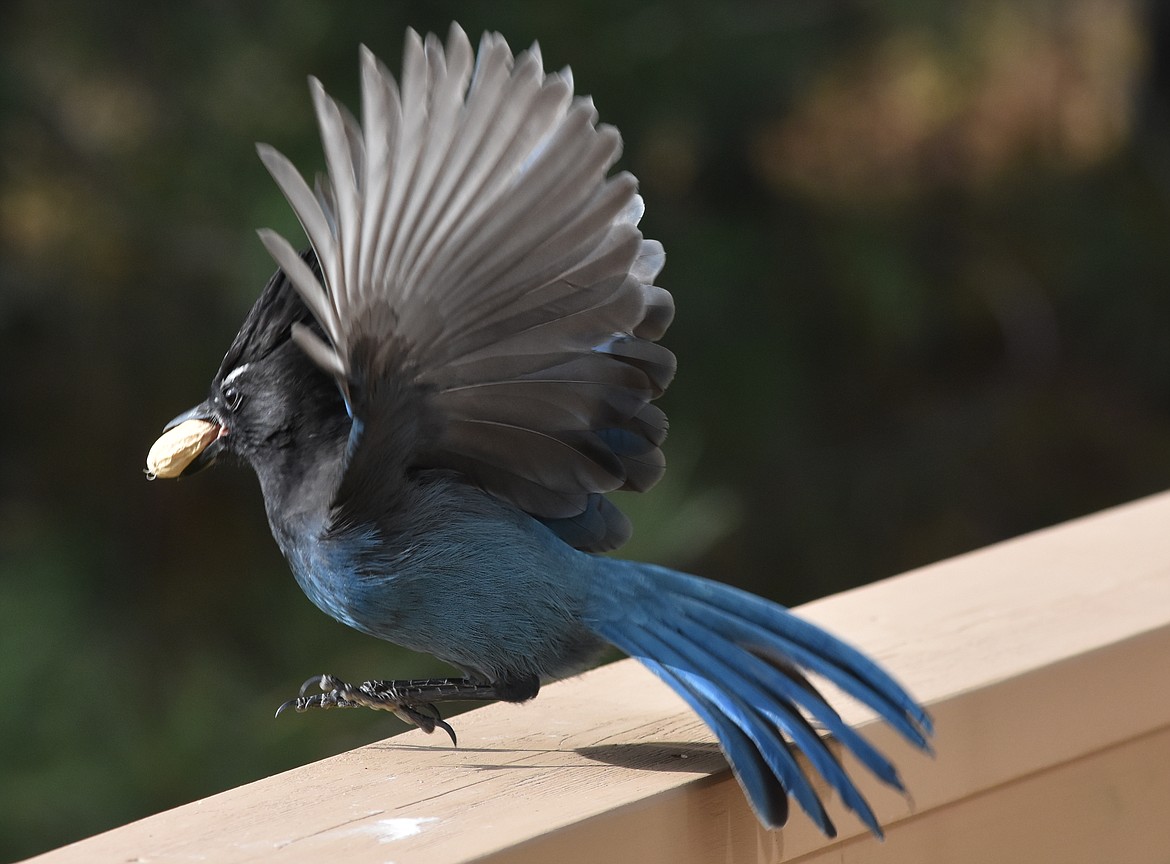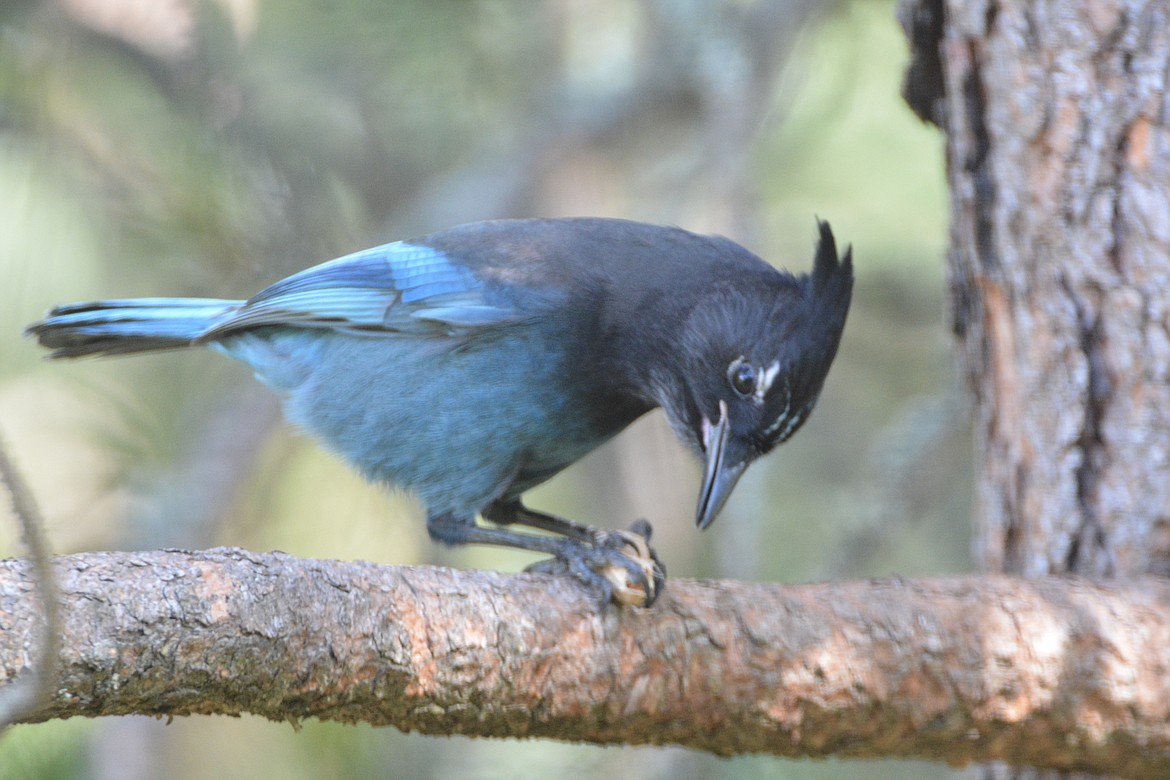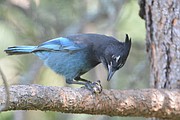Steller’s Jay: Pretty, noisy with a great haircut!
“Anyone who has watched Steller’s Jay knows that they are anything but birdbrained”
— National Geographic
I was attracted to the wooden deck railing where I had left some unshelled peanuts on the south side of our house and observed a striking bird with a long, prominent, black shaggy crest on its head and a long tail. The front of its body was black, and the black extended midway down his back with the wings luminous blue.
It was sitting quietly on the deck railing surveying the surroundings. Then it descended to the ground moving with decisive hops of his long legs. It was a handsome Steller’s jay.
If you catch a glimpse of a large, iridescent, blue bird flitting around in the trees, it is probably a Steller’s jay. There are two subspecies in Idaho. The interior variety has a black crest with distinct white streaks and the Pacific has a solid black crest. They were named by explorer George Steller in 1741. He spotted them while shipwrecked in what is now called Alaska. Since the obvious choice for a name, blue jay, was already taken he named them after himself.
The Steller’s jay (Cyanocitta stelleri) is a very pretty bird that doesn’t seem to be particularly shy of people. Although it is pretty to look at, it has very harsh, noisy vocalizations.
Steller’s jays are found throughout Idaho and in the northwestern portion of North America, at elevations of 3,000 to 10,000 feet. Steller’s Jays are generally considered a year-round resident, but some migration does occur in the fall and spring. They are opportunists, looking for handouts ... they will frequent campgrounds, parklands and backyard bird feeders and will steal unattended picnic items. They might ask boldly for handouts with loud, raspy calls and they are especially fond of peanuts.
Their diet is about two-thirds plant matter and one-third animal matter and consists of a wide range of seeds, nuts, berries and other fruit; small reptiles, both snakes and lizards; eggs, small rodents, and nestlings and they occasionally can be been seen attacking and killing small adult birds and robbing their nests.
Steller’s jays are loud and can keep up a running commentary with numerous and variable vocalizations. They are mimics and can imitate birds, squirrels, cats, dogs, and chickens. They have been known to imitate the cry of a red-tailed hawk, causing other birds to vacate feeding areas.
They form monogamous, long-term pair bonds and remain together year-round. They typically build a nest in a conifer, but sometimes in a hollow of a tree.
The eggs are oval in shape and a glossy, pale, greenish-blue with brown or olive-colored speckles. The clutch of four to five eggs is incubated entirely by the female for 17 to 18 days. Both parents feed the young.
Despite squabbles and a mistrusting nature, they are social birds. Traveling in small groups, they keep an eye on one another while foraging. They watch to partake in the other’s bounty … unwelcomed as that may be. Stealing is fair play for jays.
Enjoy the birds and wildlife in Boundary County!



